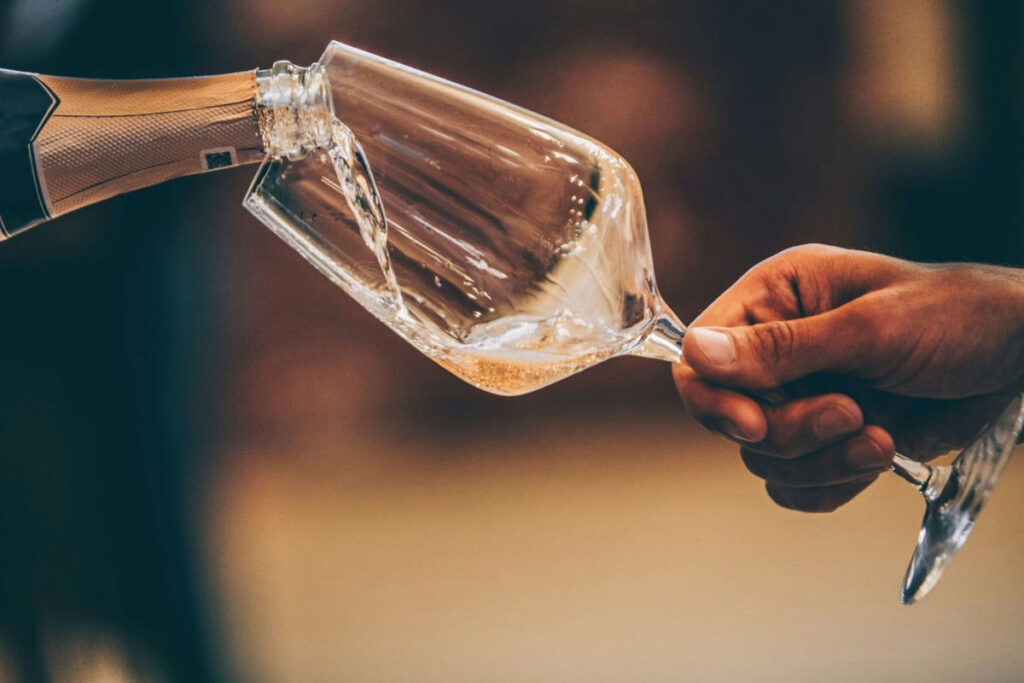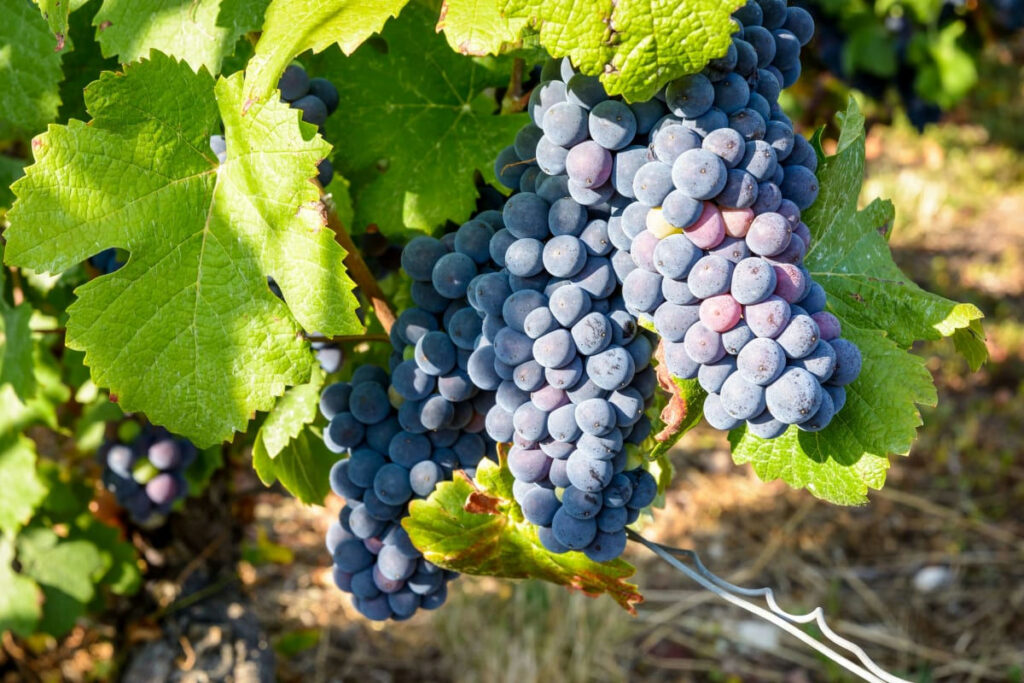
Champagne is a name that resonates with a certain majesty around the world. Synonymous with celebration and refinement, this region in northeastern France is the birthplace of famous wines that have made their mark on the international scene for their quality and prestige. But Champagne is more than just a sparkling wine. Behind this name lie several appellations that deserve special attention. Champagne, with its festive bubbles, is undoubtedly the global ambassador of the region. As early as the eighteenth century, royal courts and aristocrats were vying for the boxes of this unique wine. Today, this fascination continues, and enthusiasts from around the world flock to taste this delicacy. However, the Champagne appellation hides an impressive diversity of nuances and subtle differences linked to the terroir, grape variety, and winemaking methods. Alongside sparkling Champagne, the region also produces lesser-known but equally noteworthy still wines. Coteaux Champenois is a perfect example. These are wines traditionally produced in white, red, and rosé, using the same grape varieties as Champagne but without the champagne method that adds the bubbles. These wines offer a rich and often surprising aromatic palette. Finally, nestled in the south of the region is the Rosé des Riceys. This elegant rosé wine, produced only in three villages of Riceys, is a treasure to discover absolutely. Each sip of this wine reveals unique characteristics, influenced by a singular terroir and an ancestral winemaking method. Let’s explore together these three appellations that contribute to the fame and diversity of Champagne. From the finesse of Champagne’s bubbles to the complex aromas of Coteaux Champenois and the timeless elegance of Rosé des Riceys, let’s embark on a journey to the heart of these exceptional terroirs.
Champagne is much more than just a sparkling wine. It embodies an art of living, a touch of luxury brought to every moment of celebration. The Champagne appellation is a rigorously defined AOC (Appellation d’Origine Contrôlée), and only wines produced in this specific region can bear this prestigious name. This legal distinction is essential to protect and guarantee the quality and authenticity of this emblematic wine. Champagne is characterized by its production according to the traditional method, or méthode champenoise. This complex process involves a second fermentation in the bottle. This method is at the heart of creating its fine and persistent bubbles that dance in the glass. But beyond the bubbles, Champagne offers a rich and nuanced aromatic palette. The different grape varieties used — mainly Chardonnay, Pinot Noir, and Pinot Meunier — each contribute their own aromas and textures, creating an impressive diversity of cuvées. Champagne’s terroirs also play a crucial role. The chalky soils, characteristic of this region, allow for good water regulation and encourage deep rooting of the vines, which contributes to the wine’s aromatic complexity. The hillsides, valleys, and slopes offer varied sun exposure, adding another dimension to this diversity. A glass of Champagne can contain notes of fresh fruits, white flowers, touches of brioche, or dried fruits, depending on the type of cuvée and aging. The great Champagne houses, such as Moët & Chandon, Veuve Clicquot, and Dom Pérignon, are globally recognized for their expertise and ability to produce wines of exceptional quality year after year. Each house has its own style, influenced by its history, terroir, and winemaking methods. However, the world of Champagne is not limited to the major houses. Independent winemakers and small cellar owners also deserve our attention. Often, these artisans work their vines with meticulous care and unwavering passion, producing Champagnes that reflect the authenticity of their terroir and family know-how. Exploring the Champagne appellation means discovering a multitude of stories and flavors. It’s a journey through an age-old tradition and perpetual excellence, where every bottle tells a unique story and offers an unforgettable experience.

While sparkling Champagne is globally recognized, Coteaux Champenois embodies a quieter but equally fascinating aspect of the region. The still wines of this appellation, whether white, red, or rosé, offer a palette of aromas and flavors one might not expect to discover in Champagne. Coteaux Champenois benefit from the same exceptional terroirs as those used for sparkling Champagne. The chalky soils, rich in chalk, contribute a distinctive minerality and allow deep rooting of the vines. However, unlike Champagne’s bubbles, these still wines highlight the purity and expression of the fruit and terroir. The whites of the appellation are mainly produced from the Chardonnay grape variety. They can be both fresh and vibrant, with notes of white-fleshed fruits, lemon, and a pleasant minerality. Some may also exhibit aromas of honey and white flowers after aging in oak barrels. The reds, mainly from the Pinot Noir and Pinot Meunier grape varieties, offer aromas of fresh red fruits, such as cherry and raspberry, and sometimes notes of undergrowth and spices. They can be light and fruity or more structured with good aging potential, revealing silky tannins and more complex aromas of leather and truffle. The rosés of Coteaux Champenois are rare but just as remarkable. They often capture the freshness and brilliance of red fruits, with a lively acidity that makes them particularly refreshing. Whether white, red, or rosé, these wines invite a more serene and intimate exploration of Champagne, far from the festive sparkle of sparkling Champagne. The producers of Coteaux Champenois are often passionate artisans. They work their vines with care and precision, meticulously selecting the best plots to produce wines that tell a unique story of the champenois terroir. In this context, each bottle becomes an authentic piece, a testament to the diversity and richness of this wine region. Tasting a Coteaux Champenois is rediscovering Champagne in a new light. It’s a return to the roots, to the purity of the fruit and the sincerity of the terroir. These often unknown still wines deserve a place of honor on the table for enthusiasts and connoisseurs seeking new taste experiences.
At the extreme south of the Champagne region, nestled in the Laigne Valley, lies a well-kept jewel: Rosé des Riceys. This rare and mysterious wine, which can only be produced in the three villages of Riceys, is one of the most fascinating appellations of the Champagne region. Rosé des Riceys is a terroir wine par excellence. Its production relies on the Pinot Noir grape variety, which finds here a unique expression thanks to particular climatic and geological conditions. The chalky and marl soils, combined with optimal exposure, allow the grapes to ripen slowly, thus developing complex aromas and a beautiful concentration. This rosé wine often has an intense color that varies from salmon pink to pale pink, depending on the vintage and winemaking methods. In tasting, one discovers a rich and captivating aromatic palette. The aromas of fresh red fruits, such as cherry and strawberry, mingle with floral notes and sometimes subtle hints of citrus and honey. With age, Rosé des Riceys develops more complex nuances, such as notes of leather, undergrowth, and sweet spices. The production of Rosé des Riceys is subject to strict rules to ensure its excellence and authenticity. The grapes must be hand-picked, and a short maceration allows for the extraction of perfect aromas and colors, without altering the wine’s finesse and elegance. A low-temperature fermentation preserves the natural freshness and acidity, resulting in a balanced and harmonious wine. Little known outside of insider circles, Rosé des Riceys is nonetheless an exceptional wine that will captivate the most discerning palates. Its rarity makes it a true discovery, and each vintage invites further exploration. The winemakers of Riceys work with passion and dedication, committed to preserving a wine-making tradition that dates back several centuries. Tasting a Rosé des Riceys is a unique experience, a journey into the lesser-known heart of Champagne. It is an opportunity to savor a rare and precious wine, to discover a singular viticultural tradition, and to appreciate all the richness and diversity of this incomparable region.

One of the keys to the excellence of Champagne wines lies in the meticulous winemaking techniques and exceptional terroir that shape them. Understanding these aspects is to penetrate the soul of Champagne and grasp what makes each of its appellations unique. The Champagne method, or traditional method, is at the heart of Champagne production. After a first fermentation in tanks, the wine rests in the bottle with the addition of a liqueur de tirage composed of sugar and yeast. It is during this second fermentation in the bottle that the famous bubbles are formed. Riddling, either manually or mechanically, gathers the deposits in the bottle’s neck before disgorging, where the deposits are ejected. Finally, the addition of the liqueur d’expédition (a blend of wine and sugar) defines the style of Champagne in terms of sweetness, from brut nature to demi-sec. For Coteaux Champenois, the process is simpler but just as precise. These still wines come to life through traditional fermentation, often followed by aging in tanks or oak barrels. Winemakers carefully choose the parcels and harvest times to ensure the grapes fully express the Champenois terroir. The result is a purity of expression that highlights the intrinsic characteristics of the grape varieties and soils. Rosé des Riceys, produced exclusively from Pinot Noir, undergoes a short maceration to extract color and aromas without letting tannins dominate. It is a delicate process where the winemaker’s eye and palate play a crucial role. Low-temperature fermentation and attention to every detail reveal a wine of rare finesse and complexity. The terroir of Champagne is a unique geological composition. The chalky soils, rich in chalk, store heat and provide an ideal water reserve for the vines. These geological conditions, combined with the northern climate, favor slow grape ripening, ensuring vibrant acidity and delicate aromas. The microclimates created by the valleys, slopes, and plateaus add to this diversity. Tasting these wines is thus a discovery of ancestral know-how and a unique terroir. Each sip tells a story of passion, labor, and land. Whether a sparkling Champagne with its festive bubbles, a tranquil Coteaux Champenois with pure aromas, or a Rosé des Riceys with a delicate bouquet, each Champagne wine offers an incomparable taste experience, reflecting an exceptional viticultural heritage.
Necessary cookies are absolutely essential for the website to function properly. This category only includes cookies that ensures basic functionalities and security features of the website. These cookies do not store any personal information.
Any cookies that may not be particularly necessary for the website to function and is used specifically to collect user personal data via analytics, ads, other embedded contents are termed as non-necessary cookies. It is mandatory to procure user consent prior to running these cookies on your website.